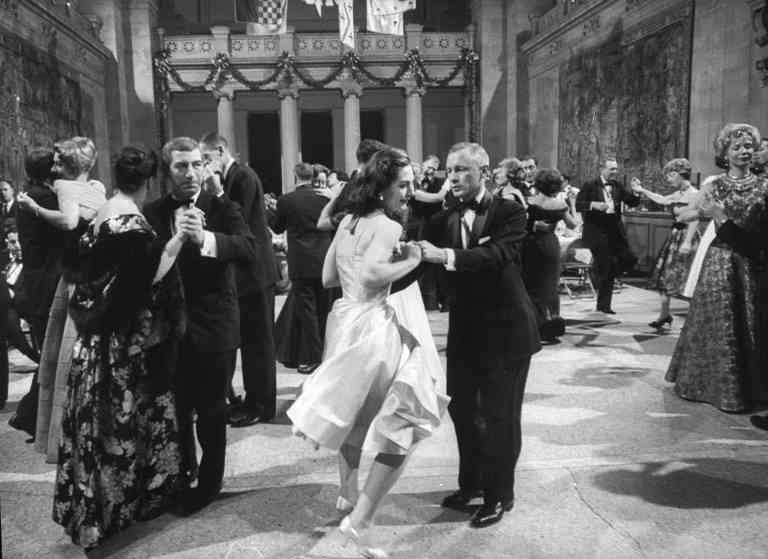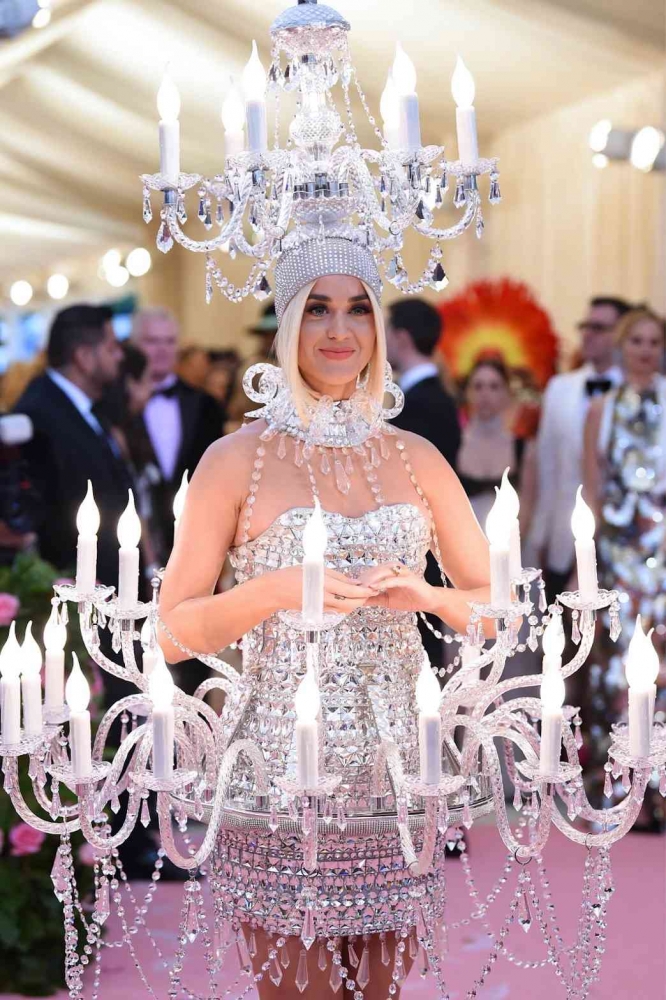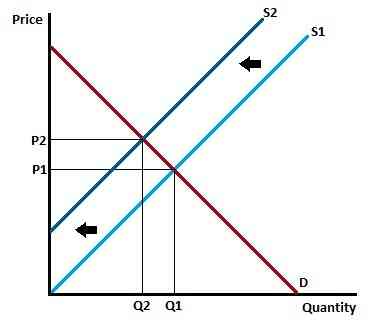"Fashion is capitalism favourite's child"
Werner Sombart
The Met, Oscar of Fashion
Blitz and velvet, it's the fashion's biggest night out in the city again! On the first Monday night in May, the biggest red carpet event of the year brought together some of the biggest stars in the nation at the steps of the Metropolitan Museum of Art in New York City, all dressed in their most extravagant and exquisite couture designed by high-profiled designers for a fashion celebration that was completely hidden from the public's view. This is the Met Gala, which has an impressive cultural cachet for an event that is supposedly exclusive for fashion nerds.

Since its establishment in 1948, The Met Gala has had a rich history. Organized by Eleanor Lambert, a fashion publicist, and Dorothy Shaver, president of Lord & Taylor-fashion retailer based in New York City, the event has a purpose as the fundraiser for the newly established Costume Institute, a curated collection which consists of art that intersect with fashion objects from the 15th century to contemporary ages featured in different themes.
Within this article, we will explore how this annual supper is a microcosm of the economic forces, social structures, and cultural values that characterise modern capitalism. It embodies the ethos of conspicuous consumption, status-seeking behaviour, and market-driven competition inherent in capitalist economies. While on the other hand, the Met also has a powerful effect on the fashion market. So, is The Met Gala necessary in this contemporary world? How did it represent capitalist society? And what impact does it really give to the industry?
The Bourgeoises Are In, The Proletariats Are Out
Every event has its own nature, not to mention Met Gala. The triumphs have a lot of traits, such as special invited guests, a thousand dollar tickets, and the "show-off" of magnifying and wildest designed couture on the red carpet by certain fashion houses through their chosen celebrities. This exclusivity not only maintains the status quo of social stratification, but also the idea that society circles and renowned events are exclusive to certain groups of people based on their financial standing, reflected from the clothing.
The Met attendees were often identified by items they wore---particularly dress, tuxedo, or others. In the fashion industry, a dress is not just a structure of meaning, it is also a commodity produced by a corporation and sold on the market for a profit at huge environmental cost. The fashion designer is a worker whose work exists to enrich their company and earn them a wage--no matter how extravagant (Tansy Hoskins, 2022).
In the issue of Met Gala, dresses curated by designers can be retained as the cultural capital. According to Pierre Bourdieu, a French sociologist, cultural capital is shown in the forms of cultural products which were traces left by or specific manifestation of the theory, or criticisms of these theories, questions and so on. Based on internalised cultural content, the person with cultural competence determines the worth of cultural products, which can be transmitted in the form of material. Objective cultural capital is a unique commodity in the market mechanism that is borne by carriers of cultural items, specifically cultural commodities. The expression of cultural products in materiality and symbolism, respectively, is what makes them unique. Cultural products are valued materially by economic capital; yet, cultural capital bestows cultural value on them in terms of symbolism (Xu Yongjian & Xu Liqun, 2015).
A Modern Manifestation of Veblen's Conspicuous Consumption
The grander, the better. The grandest, the best. That's how the public defines the "success" of looks in the Met. Many of us don't recognize the plain looks, we tend to highlight the luxurious and eccentric appearances. This corresponds to the Theory of Conspicuous Consumption, which argued that wealthy individuals often consume highly conspicuous goods and services in order to advertise their wealth, thereby achieving greater social status (Thorstein Veblen, 1899).


Throughout the years, designers always make these splashy configurations and collaborate with famous stars as their models. Image 2 has shown one of many Met Gala's "unique" demonstrations just to gain acknowledgement, mainly in social media. Imagine how ambitious these designers and fashion houses are that they put astronomical effort into creating appearances, just for a one night look.
Creation of Exclusive Market
Not just the massive haute couture, Met Gala also portrays capitalism by serving scarce availability of the event. Since 1999, Anna Wintour has been the main organizer of the occasion, she selects the guest list herself and a Met Gala invitation is a highly prized status symbol by then. This dynamites the market condition, which in Figure 2 a leftward shifting on the supply curve occurs that identifies how the high-pricing and limited invitations for the Met Gala decrease the quantity of attendances so the velvet dinner can be exclusive for the elites.

This means, ordinary people cannot simply purchase tickets for the Met Gala. Anna Wintour herself, starts planning the guest list months in advance and devotes a great deal of time carefully selecting each invitee (Mud, 2023). She seeks out attendees who are noteworthy and powerful in the fashion world, such as designers, models, and style icons who have had a big impact on the field recently. Other than Wintour, every year a new fashion label sponsors the event, and they frequently have some say over who gets to attend. Furthermore, there are only a certain number of invites available because the guest list is restricted to approximately 600--700 individuals.
With a mechanism like that, only the high-profiled can get in and the poor can only watch. Which sets an irony that the rich are getting richer due to their escalating power and status because of the Met Gala disclosure, creating an unstoppable cycle of a capitalist mindset how the poor cannot climb their social and economic status.
Glamorous Economic Evolution
Apparently after we understand the capitalist phenomenon of Met Gala, it actually captivated strong economic impact for the fashion industry. During the early years, the night cost $50 a ticket and in a matter of years tickets doubled in price, reaching $50,000 per ticket and $300,000 for a table by 2023. Tables at the Gala typically go between $200,000 and $300,000. The fashion exhibit, which is typically open to the public after the event, drew an estimated 1.6 million visitors in 2021.
The event doesn't just raise fundings for the museum as it's first purpose, but significantly generates money for the brands and celebrities involved through an incredible media footprint. Collaborations between designers, brands, and celebrities flourish during the Met Gala. These collaborations frequently lead to advantageous publicity, creating excitement for both the performer and the brand, as well as building prestige and image for all celebrities that attended the event. Back in the last year Met Gala themed "Karl Lagerfeld: A Line of Beauty", one of the Gala's co-chairs, Dua Lipa, received the highest MIV of $1.4 million for wearing a Chanel gown from the autumn 1992 couture line (Stacy Jones, 2024). Her selection of an antique Chanel gown attracted a lot of media attention. Not just Chanel, another Lagerfeld-affiliated house, Fendi also garnered $32.3 million in MIV and a number of celebrities, including Silvia Venturini Fendi and the brand's co-creative director, Kim Jones wore Fendi pieces. Other brands like Gucci, Schiaparelli, and Tiffany & Co. experienced the same effect with the total of $995M in MIV for the 2023 Met Gala.
Those relevance effects can be seen through the lens of market signaling, a theory that Michael Spence put out. The concept is that of one person (signaler) genuinely communicating with another party (receiver) regarding certain information about themselves. Which by their attendance at the Met Gala and the displayed clothing, corporations and celebrities convey their economic and social opportunities.
In addition to utilising the fashion sector, the Met Gala promotes tourism and museum visits, two activities that are vital to NYC's economy and take place not only in early May but also in the months that follow. A City Hall spokeswoman stated that the city saw 62 million tourists in 2023 and anticipates more this year (WWD, 2024).
Ahead of the Gala, Is It Still Relevant?
The Met Gala has been a captivating exhibition in the public's eye from each era. Although since the start the creators have shaped it into a sole and distinguished affair---representing capitalist behaviour that views cultural assets as treasures and only the wealthy individuals with status can come. Of course, we can't deny that the Met Gala excels because it's a once-in-a-lifetime opportunity for building star and brand personas. It serves as a showcase for the dual themes of attainable glamour and illusory accessibility that characterise contemporary stardom. Up till this day, this event became a potential place for market creation and everyone believes that this is also a tribute to art and creativity.
Well as the fashion top soiree, Met Gala organizers should consider the more diverse and inclusive guest list. Thus, in an era of overexposure, the Gala manages to be both extremely apparent and a mystery at the same time. Only at this occasion, celebrities are allowed to communicate with their audience without using words and then disappear into the night once more, leaving no trace and no means to be reached. Then indeed, the Met Gala is still essential.
Diulas oleh: Anggia Putri T. | Ilmu Ekonomi 2023 | Staf Divisi Kajian Kanopi FEB UI 2024/2025
References
Andrikopoulos, P., Gregoriou, G. N., & Kallinterakis, V. (2016, August 5). Handbook of Frontier Markets. Academic Press.
Charoenrook, A., & Thakor, A.V. (1998). A THEORY OF CONSPICUOUS CONSUMPTION.
D. (2023, June 11). Beyond Fashion: Exploring the Met Gala Evolution - Dmtrend - Medium. Medium. https://medium.com/@dmtrend0/beyond-fashion-exploring-the-met-gala-evolution-eab8b25c33e5
Feitelberg, R., & Lockwood, L. (2024, May 6). The Met Gala Economy Glitters, but Is It Gold? WWD. https://wwd.com/business-news/business-features/the-met-gala-economy-glitters-gold-business-impact-1236353258/
Grady, C. (2024, May 7). Met Gala 2024: how the event went from local society soiree to the fashion Oscars. Vox. https://www.vox.com/culture/24148228/met-gala-history-controversy-anna-wintour-celebrity-zendaya-kim-kardashian
Hoskins, T. E. (2022, August 1). The Anti-Capitalist Book of Fashion. Pluto Press (UK).
Jones, S. (2024, May 6). The Met Gala Effect: Elevating Fashion Brands to Global Prominence. https://www.linkedin.com/pulse/met-gala-effect-elevating-fashion-brands-global-prominence-jones-bgg7c/
M. (2023, May 1). MUD Magazine - Music, TV, Film, and Internet Interviews. MUD Magazine. https://www.themudmag.com/post/how-anna-wintour-creates-the-met-gala-guest-list#:~:text=She%20also%20looks%20for%20celebrities,the%20theme%20of%20the%20event.
Marxism - Econlib. (2021, June 18). Econlib. https://www.econlib.org/library/Enc/Marxism.html
Marxism | Definition, History, Ideology, Examples, & Facts. (2024, April 23). Encyclopedia Britannica. https://www.britannica.com/topic/Marxism/Class-struggle
Ostberg, R. (2024, May 13). Met Gala | History, Costume Institute, Metropolitan Museum of Art, Themes, & Facts. Encyclopedia Britannica. https://www.britannica.com/topic/Met-gala
Team, C. (2023, November 22). Conspicuous Consumption. Corporate Finance Institute. https://corporatefinanceinstitute.com/resources/economics/conspicuous-consumption/
Xu, & Xu. (2015). Cultural Capital Theory and College Students' Cultural Competitiveness. International Conference on Mechanical Science and Engineering, ICMSE2015.
Yang, A. (2024, May 6). A short history of the Met Gala and its iconic looks. Culture. https://www.nationalgeographic.com/culture/article/met-gala-costume-institute-fashion
Yipp, J., & Yipp, J. (2022, May 8). Does the Met Gala Help or Hurt the Fashion Industry? - Business Review at Berkeley. Business Review at Berkeley - UC Berkeley's Leading Undergraduate Business Journal. https://businessreview.studentorg.berkeley.edu/does-the-met-gala-help-or-hurt-the-fashion-industry/
Baca konten-konten menarik Kompasiana langsung dari smartphone kamu. Follow channel WhatsApp Kompasiana sekarang di sini: https://whatsapp.com/channel/0029VaYjYaL4Spk7WflFYJ2H











